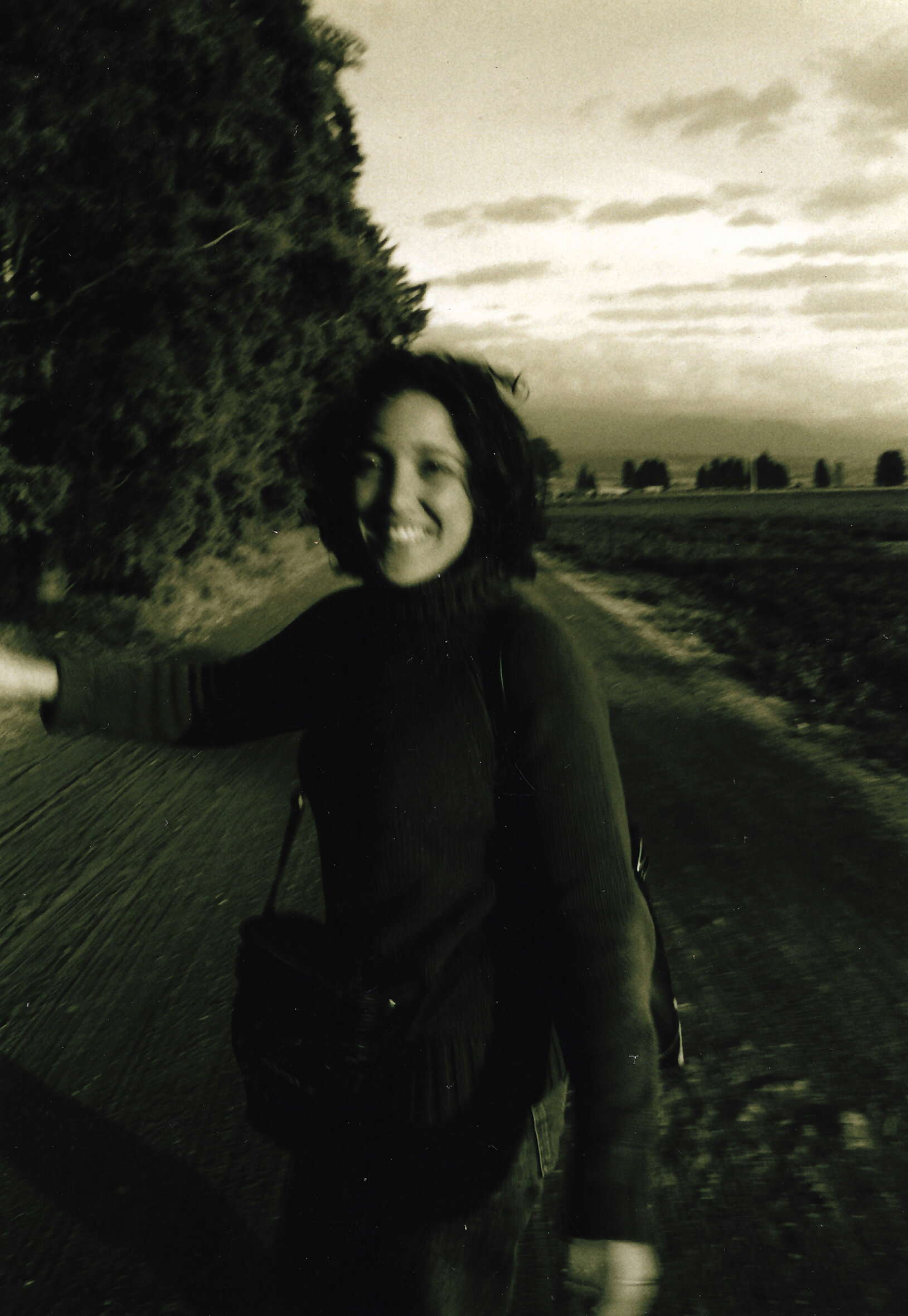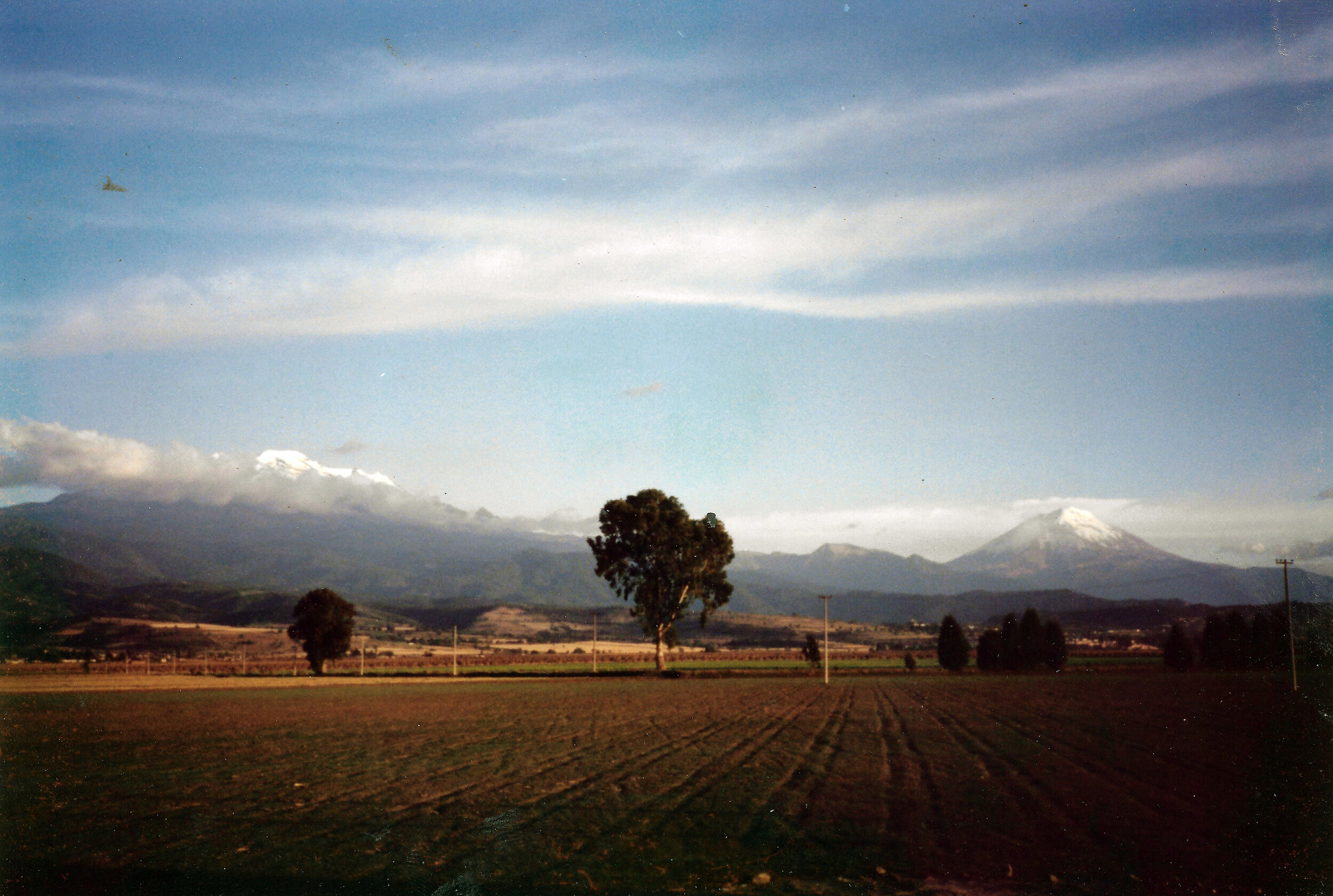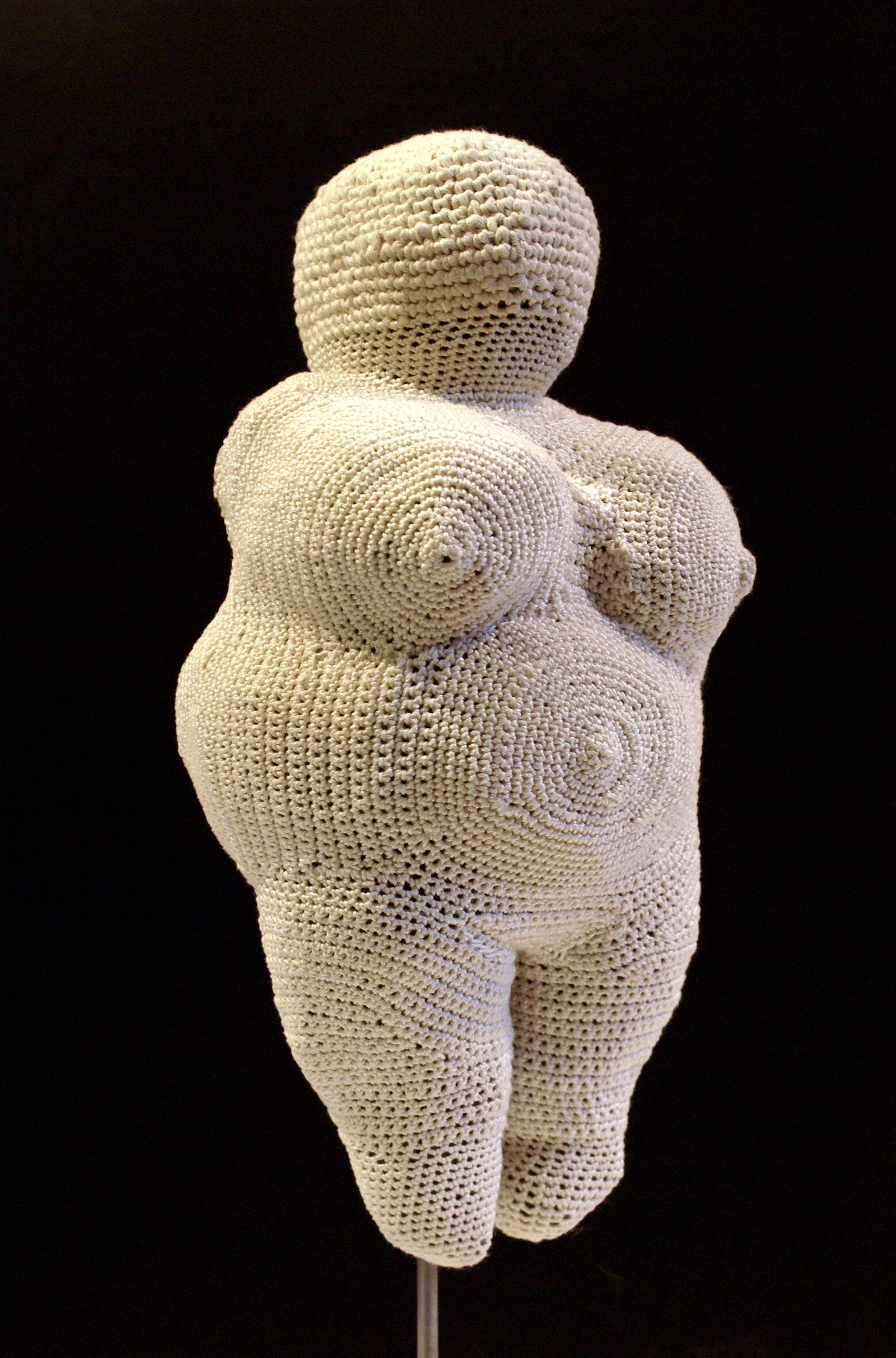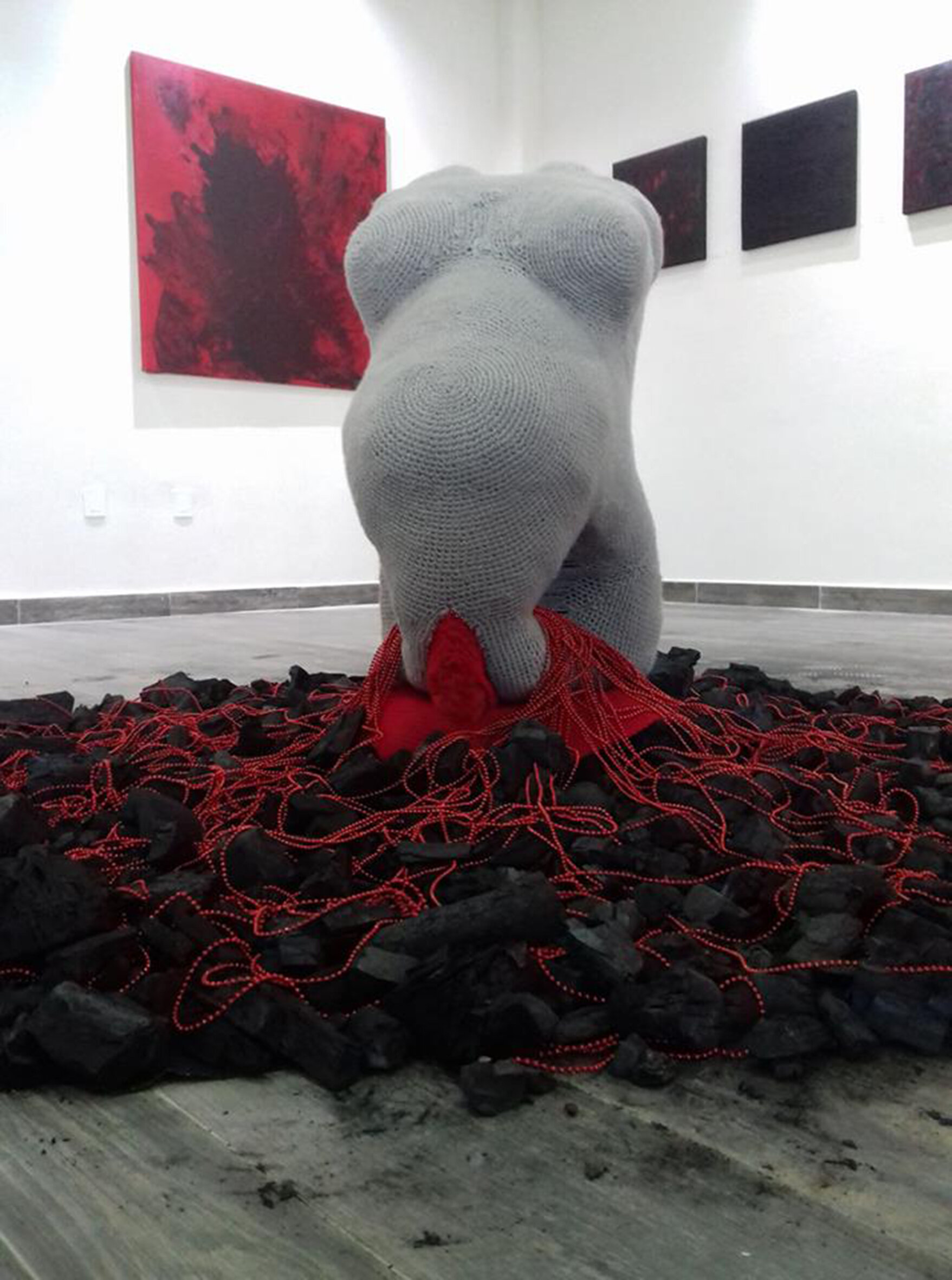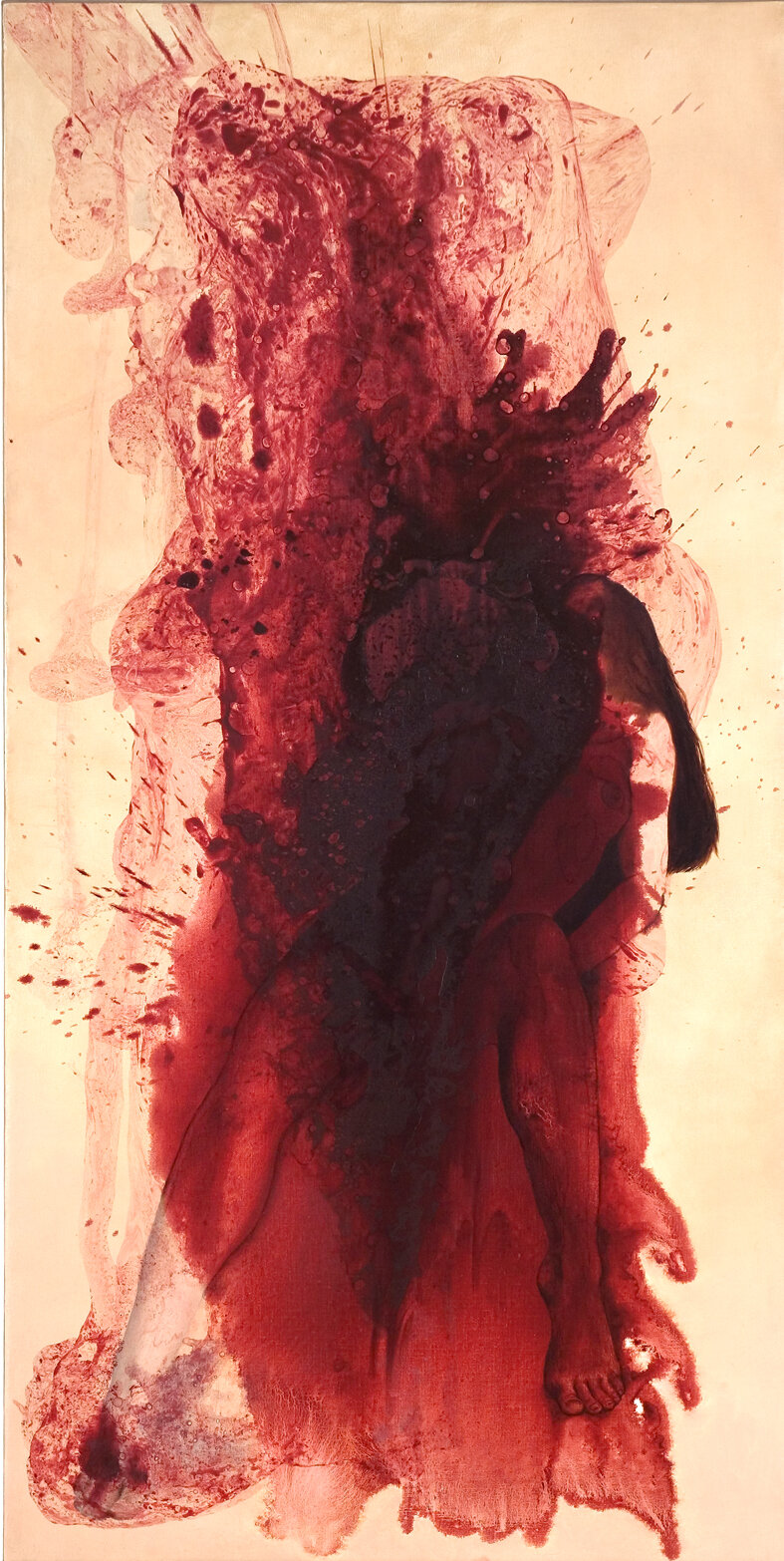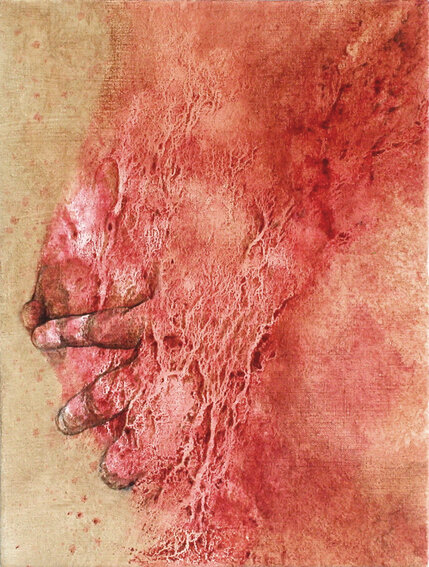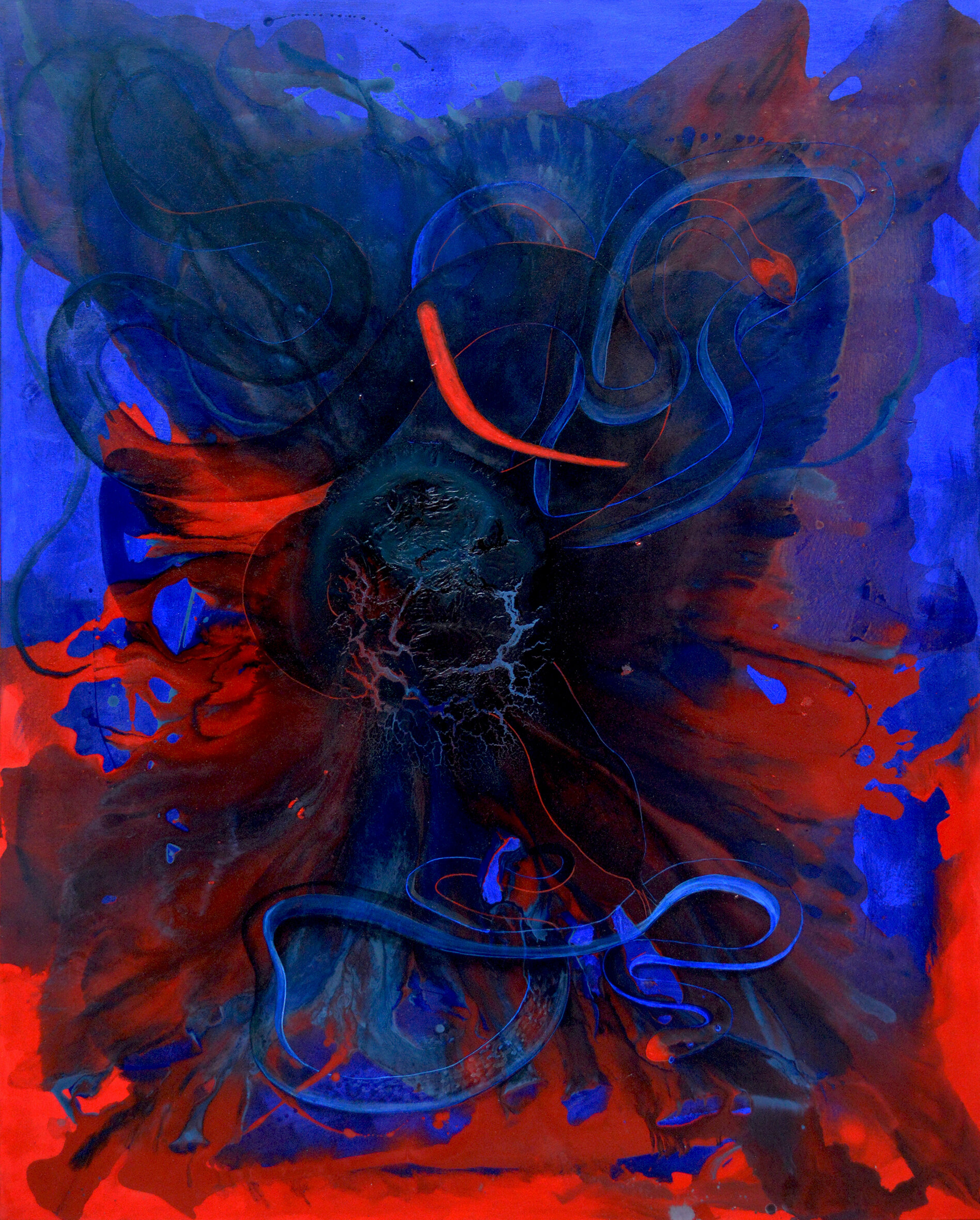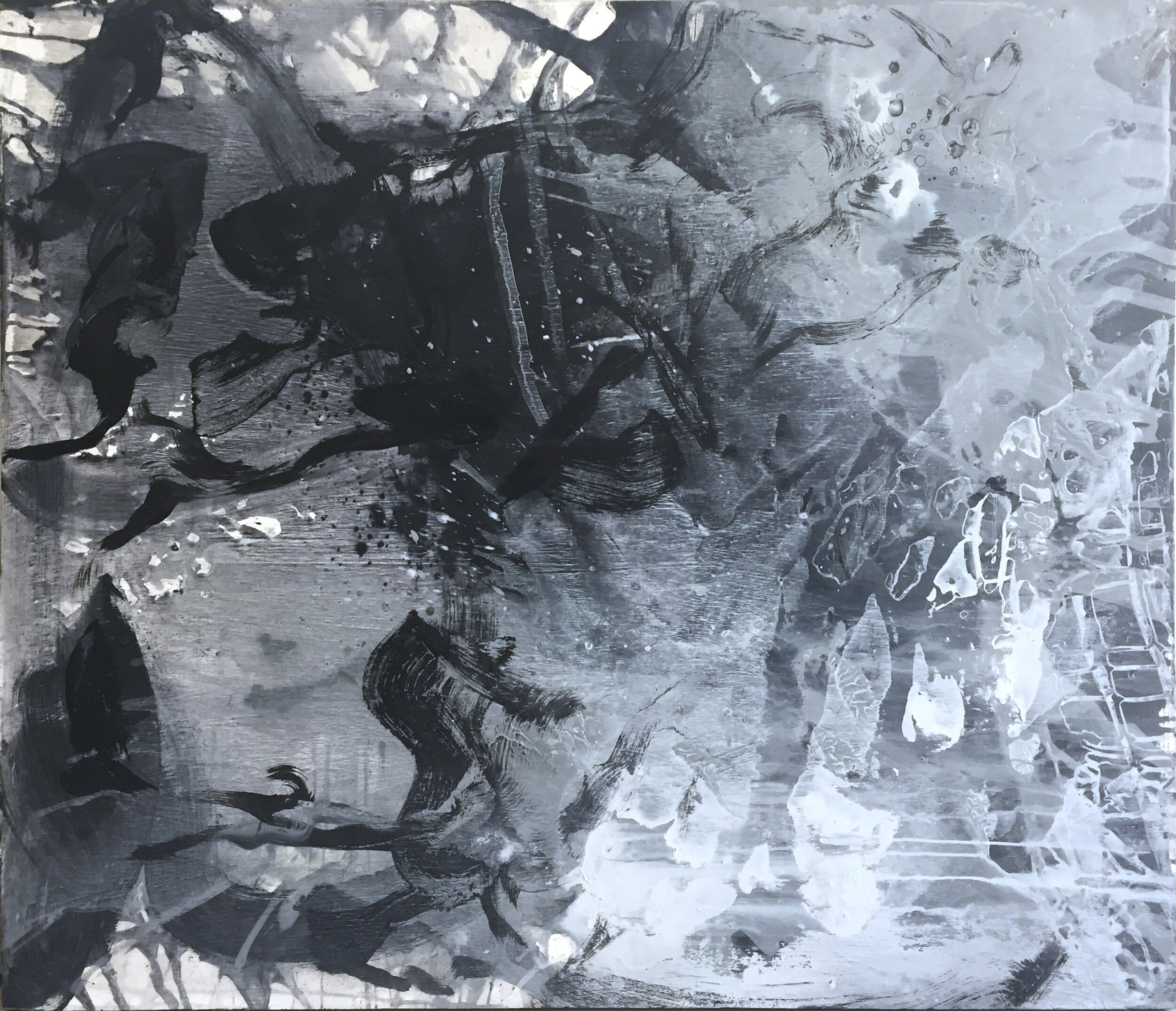Ana Paula Portilla
Ana Paula Portilla is a multidisciplinary artist from Mexico. She has participated in more than 80 solo and group exhibitions in Mexico, France, Spain, Italy, Brazil, Germany, Australia, Japan, Serbia and USA. We talked to Ana about her art, different techniques and objects of inspiration she has.
How did you discover art?
I would love to say that I discovered art as a child, but I believe it was the opposite. Art discovered me, caught me as a sin. I lived isolated from the world on a big ranch near the Popocatepetl volcano when it still had eternal snow. At home there was a forbidden room, my parents’ library. There were leather and gold bound books and I didn’t have the permission to touch them… So, of course one day I opened a book and saw Jan van Eyck’s Arnolfini Portrait. This painting literally haunted me for years, scared me, I didn’t understand the painting, the colors, the sadness, the wife's decorative horns, the stop hand sign of the man, the mirror « eye » in the back…
I grew up surrounded by a magnificent landscape, my home was my country, the most beautiful skies, two thousand cows, calves were born daily, hectares of alfalfa and other crops, huge fluttering of birds, and very long hours of wonderings. Art came to me that way (there was very little TV, no internet, no books, no neighbors…). I started painting…
Much later, still living at the ranch, I needed contact with what I thought was real life, so I asked for French lessons every Saturday in Mexico City (one hour and a half away) and as soon as our driver fell asleep in the car, I snuck out to the bookstore nearby. I bought books, I started writing and I met the great painter Jorge Soto, who agreed to see my work and teach me while I was supposed to be learning French. That was the beginning of my life as an artist.
You come from Mexico, which has such a rich cultural history, only a portion of which is known outside of it. We all know Diego Rivera and Frida Kahlo, but that's just the tip of the iceberg. What are some Mexican artists and aspects of Mexican culture that inspire your work?
Mexico is a huge country, with so many different cultures and struggles. Because of this multiplicity, Mexico itself can’t find a common ground. The origin and the identity of a country are not the same thing. To clarify the idea a little more, I transcribe a paragraph by Zunzunegui, who in his many books, repeats again and again the idea of that strange Mexico’s enemy (today) :
«(…) The labyrinth of solitude and paradoxes in which the Mexican lives lost: a being who is partly Indian but does not want to be Indian, who is partly Spanish but denies his Hispanicity; a country of mestizos who are presumably proud of their cultural miscegenation but where no one accepts a mestizo, and then seek their indigenism or their Hispanicity. A mixed country where the Spanish half is denied. A people that was born from the encounter, however violent, of Cortés' adventurers with the Amerindian world, but that seeks to despise Cortés and transform his epic into a conquest, our conquest. (…) A country where in the end we are all mestizos, with a tradition of contempt for the mestizo.»
And further on he tells us: « When tourists come, we take them to see the legacy of the dead Indians, never to see the reality of the living Indians. What is certain is that it was not Mexicans who built Chichen Itzá or Teotihuacán, because there were no Mexicans before 1521. »
2011 Dice Ramona-Textile sculpture-EcoPola
Mexican artists are very diverse and numerous, there are so many great artists! There is of course Leonora Carrington (UK) & Remedios Varo (Spain) both Mexican nationals, but from the living ones, I can mention some of my colleagues such as Jorge Soto and Luciano Spano (Italian origin), also Daniel Lezama, one of the most Internationally well respected Mexican artists like Damian Flores. Carmen Mariscal is a powerful Mexican woman artist living in Paris and Sandra Contreras based in Berlin, are both great friends and artists. I also think about Teresa Margolles, one of the most controversial contemporary woman artist. I could mention a lot of names.
What Mexico means to me (and what inspires me) is that it’s the land of living surrealism by accident, miraculous functional chaos, paradoxical contrasts, real magical phenomena, undiscovered pre-Hispanic vestiges, we’ve got all climates, huge diversity and lots of problems but we keep going on like daily miracles that nobody understands nor questions. It is a very violent place but also the most welcoming and smiling country. As a woman artist you are confronted by a macho-land not only lead by men but by cultural behavior also present in women. In some parts very religious and mystical thoughts leave little space to move and exist. It is a very crazy place to live and work, this is a savage jungle. When you see the Lava series, the cow-skins, the blood series (EnVie) there is some Mexico in there, the experiences of being born here are undeniable, I am a very confused criolla (Spanish born abroad).
On your web site, you write that your art, among other things, questions the savage in us. And I feel like this is often reflected in the materials you choose, your choice of techniques, even the objects you decide to create. What can we learn from our inner savage and why do you feel it is important to explore it?
As civilization, we are desperately lacking humanity. We mistake humanity with social issues, politics and economics, but come on, we are mammals living in our complicated and made « natural » habitat. We have tons of personal problems and we ignore, on a daily basis, that our inner survival does not have anything to do with money, governments, social status or gender. We need to realize that we have to solve our lives for ourselves. We just need to remember that we have a skin (our true frontier) we have blood (that transports life) we have a palette of 395+ different emotions, feelings and moods that we reduce to some smileys (I dare anyone to mention at least 50 of them), we have 5 senses (or more), and we are not trees, we can move and compose anything. Our soul needs to be fed.
My art tries to reach all these important matters: birth, maternity, sexual desire, hunger, pulsations, hormones and pheromones, it pays attention to presences we feel around us, to call the intuitive powers we all have but are drowned in education and socio-political indoctrinations… So, by exploring the savage in us we are reconnecting with what we are inside, and to the Earth. We need to remember the cave that we came out of. And fight for those who can’t fight by showing and creating art.
I am very attached to the prehistoric caves. My family is from Spain, near the Altamira site, somehow there is an unrelenting resonance in me. This is my cave, but everybody has his or her own, with its smells, shadows, materials, elements and presences. My work tries to approach it in a way that is atemporal so that others can reach their own grotto.
In your work you use different, unusual materials and techniques. Whether it's crochet as a sculpting method, or cow skin or hair. What's the importance of these materials for you?
The hair is our first cover, not clothing. Our skin is the walls of our inner home, and painting is also a skin (not only a window). Cow-skins are an intermediary between painting and textile art. The crochet sculptures came to me when I didn’t have a studio for some time, and later again when I was pregnant. I didn’t want to touch toxic materials so I knitted… Knitting is truly a meditative labor that transports you to a trance from where you can see some things clearly. These very simple materials can create huge pieces that you can touch. Sometimes to see from far is not enough. Like paintings that you cannot caress, and for some subjects it is not the right material because of the feeling I need to put out there. One must make an accordance, and not force things, materials have their own life and language.
1999 - My other Skin- Lactance detalle EcoPola
In 2012 you created a series of crochet sculptures called Mere perdue (Lost Mother) exploring different facets of Venus of Willendorf, as the archetype of femininity. What inspired you to use crochet as a way to approach this subject and why Venus of Willendorf?
All these sculptures of Venus are a long reflection of what a prehistoric doll might have been: an art object, an auto-exploration device for woman (doula ancestor) and the little voice that whispers to you, like a caring mother. I took many of the prehistoric sculptures and created others, the wool is there to feel protected, you may touch and approach to listen to « her ». To feel the power of fertility in those knitted goddesses is to knit as one would for a newborn, but this time it is me, as a woman that is re-born, it commemorates this rebirth. Their title of is « Mere Perdue- Perdue en Mere » (lost mother - lost in the sea/mother), these sculptures are an anchor to hold on to, to emerge from (as in the story of Vassilissa and Baba-Yaga), to come up from the dark, from the deep sea of motherhood (in French sea and mother sound very similar), un-drown from this overwhelming experience of giving birth to a being, or calling out from a lost mother, we all need to be cuddled from time to time.
The female physique seems to have a special place in your work. Perhaps most directly in the Seuil Umbral series which explores the female body in a way as a sacred space. Tells us a bit about this series and how did you come to create it.
Seuil Umbral was born from a collaboration with Dupont Co. They were developing new glass products and I created this series. The stained glass of the cathedrals « that glow as gems » inspired me to do those pieces and they answer the question: what’s glows from my body? Sacred spaces from inside my body, the energy the flows, the internal territory that we own… this silence and peaceful inside cathedral that is our body if we let it light up, it reveals itself.
Your overall artistic output is rather eclectic and complex. You use different tools, different mediums, your work ranges from figurative to completely abstract, from intimate to political.
My artistic journey is more a quest for endurance and continuity than an easily recognizable style and medium to stick with. I work by series, depending on what I am living in that time of my life, and what can relate to every woman or man. We are multiple, I am not the child, the youth or the woman, nor the sister, the spouse, the friend, the grand-daughter or daughter, the mother or the painter. As women, we can recognize this very easily, we are an «equilibre changeant» (ever-changing balance) that’s the feminine power for me. Like our emotions, it is not because you pass through a depressive state that you are depressive, the same with happiness, or art. But there is a common thread in all my work.
What is your process for more abstract works Ozone (2013)? How does one know when an abstract piece is finished?
The Ozone series are about a perfume that was created for me by a very famous Nose in France (the one that created the Paloma Picasso perfume) so I worked on the smell and the ethereal capacities of paint… When is it finished? I must say the painting tells you when. It is impossible to describe it in words. The end of a sentence is when the significant feels right and there. My abstract paintings aims to be « hyperrealistic » : blue is water or sky, reds are blood and flesh or liquid stones as lava, etc. Even in abstraction I need to relate to some real or essential grip, that means, signifies.
Your life is situated both in France and in Mexico, and you've traveled the world with your art. How do you see the position of women artists in the art world right now?
The world has become a very little yet vast place, there are so many of us in so many places. The range of action is a never-ending possibility but everywhere there are art groups that hold on to their territory and it is difficult to get in, it is theirs. I do not know in what position we are in right now; we are still building it. We have little recognition and open spaces for us as women artists, but I can tell that the effects and strength of women artists in the world are starting to show and be seen, and this makes me very happy. For example, the «art symposium phenomenon» like Gala Symposium, founded by Gala Caki. She is truly a force of nature that I admire very much. I think symposiums are great solutions artists have founded to create opportunities for art to exist today (an actual version of the Salon des Independents). Your platform hiPeggy is another vivid example of this. I feel very grateful for it! It is through collaborations that we might grow in visibility and power. When a territory is occupied (the art world) we have 2 options, either fight and take it (get in), or create something that is our own. I prefer creation, freedom, sisterhood cooperation, independence, autonomy and collaborations.
In your own career, what is your experience as a woman in the art world?
I can assure you that most (but not all) of the opportunities I have had, they have been proposed by other women. That is a fact! I have many men artist friends, and we love each other’s work, but very few men open to and recommend women artists. But when they do… it comes from real collaboration, mutual admiration and profound comprehension.
Performance artist Carolee Schneemann spoke about the ability of women to elevate contemporary art above its obsession with glamour and money. I remembered this while looking at your work. There is something visceral and brave about it. Something that goes beyond just pretty or ironic or intellectual. How can the female gaze transform the way we do and see art?
Yes, visceral and courageous are indispensable. There is nothing about money or glamour in my art, I am not even interested in shocking or being controversial. What I seek is the real, to awaken, to inspire strength … Because I do need those things to live and I do not always have them. I search, I pursue this in my own everyday life. We all struggle, so if Art can transform something this would be it. Art is not for everyone, but for those who want it. What matters in Art is the resilience, sublimation, emotions, the discovery of ways of surviving life in all our ages, we need to care and find the meaning, move, resist and encourage women artists, develop serious art skills, knowledge and get a tribe. We do matter, women artists, we are bearing witness.
Art is for those who want but, how to love something we ignore? If we do not even know about its existence, it is impossible to respect and appreciate. Women artists are confused with feminists (we can be feminists or not) sometimes there is fear, but we need each other! Female art makes us see, discover and understand the world from a different point of departure, half of the world is female. We keep up the creation, the work… the artistic life of a woman artist is in gestation.
I thank you from my heart for this opportunity to be seen and share my work.
You can see Ana’s work on her website www.anapaulaportilla.net and www.matrizwomanartists.com


